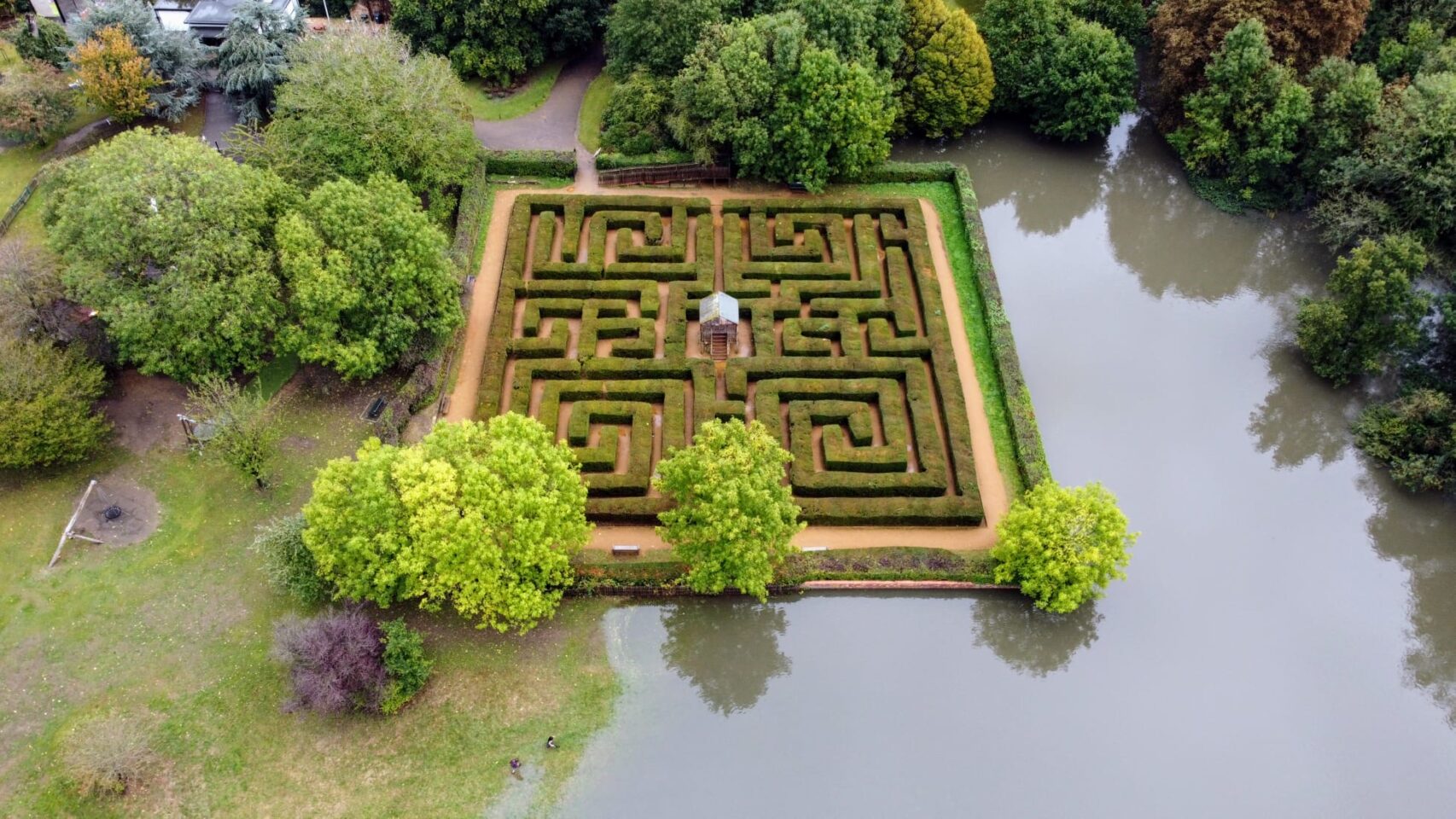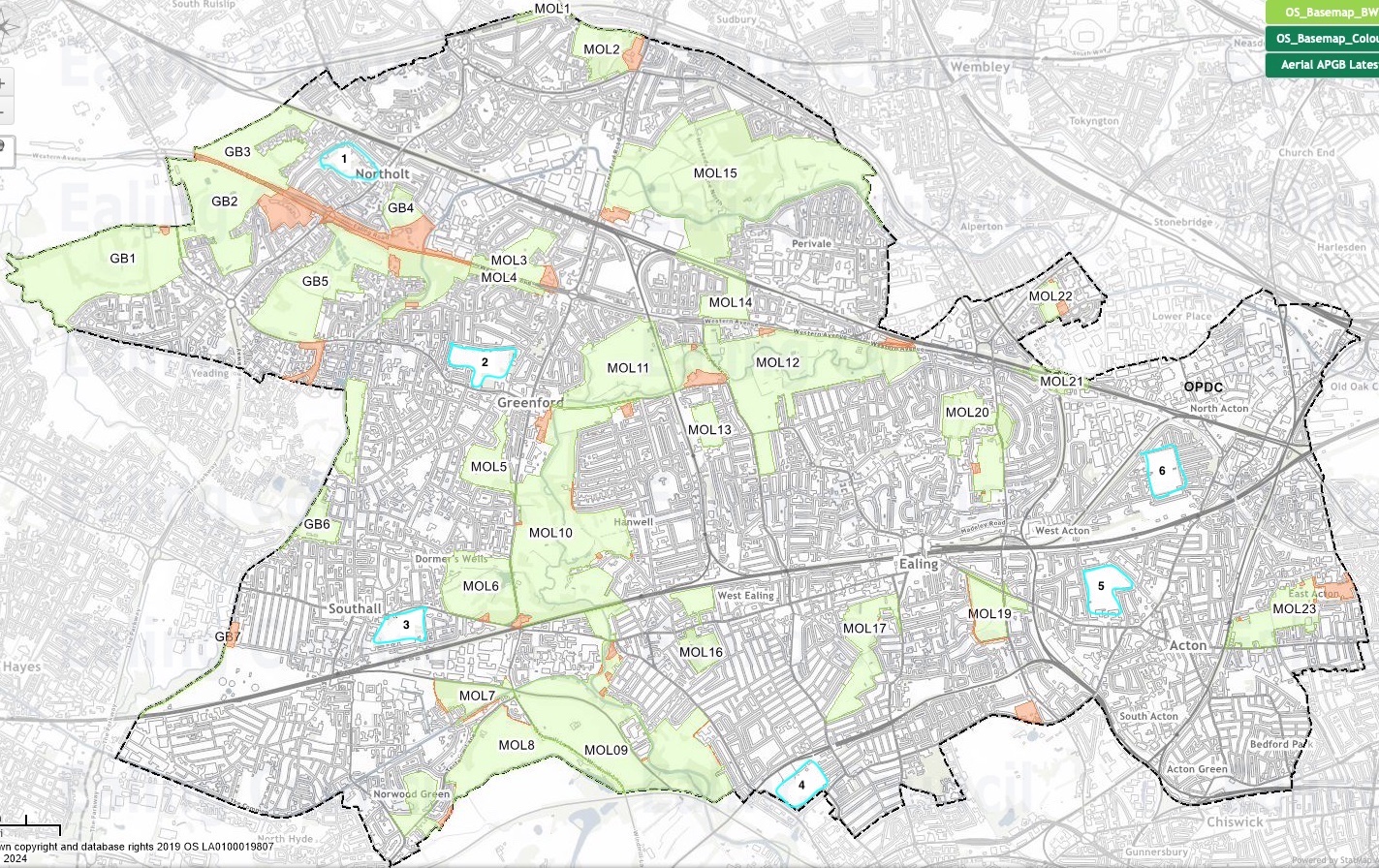Our response to Ealing Council’s Local Plan – A missed opportunity for our parks and rivers

Millennium Maze, Brent Lodge Park in the Brent River Park – photograph by Johnny Clifford
What is the Local Plan and why is it so important?
Take a look out of your window or go for a walk to the end of your road. Much of what you see around you is where it is because of the planning process. Everything built since the Second World War, all the changes to houses, commercial buildings, parks and roads have been approved and often modified by the planning process. Your neighbourhood looks as it does because of previous Local Plans.
This latest Local Plan will set Ealing’s Planning rules for the next 15 years. It identifies which land can be developed and how that land will be used. It also designates the land where development will be restricted, such as parks and other open spaces. As council leader Peter Mason said, when presenting the plan to councillors in February, the Local Plan has to be a legally tight document:
“It sets out a vision for the borough and tells developers what they can and can’t do.”
The Local Plan is therefore the template for how the borough will evolve and develop between now and 2040. If you are an Ealing resident or planning to be here over the next decade-and-a-half, this will affect your environment and many aspects of your life.
The new Local Plan
Ealing Council published the next iteration of its Local Plan (the ‘Regulation 19’ version to use planning speak) in February 2024. In our view, it is a significant improvement on the previous (Regulation 18) version, though there is still much that we would like to see included for it to be elevated into something truly ground-breaking for Ealing’s community and wildlife. Let’s take a deeper look.
We welcome the proposal to give our Brent River Park (BRP) official Regional Park status. It is a fantastic opportunity to protect and improve the joined-up management of the whole of the BRP and adjacent green spaces. As a Regional Park, the BRP has great potential to become a flagship for Nature Recovery, Biodiversity Net Gain and the revival of our shockingly polluted River Brent. Our park is already providing a safe haven for wildlife, sports provision and wellbeing. We now have the chance to further improve upon it and to complete the vision our founder Luke FitzHerbert set out almost 50 Years ago when our charity first formed the park we all know and love today. The Brent River Park is a crucial floodplain and as a Regional Park we can improve its flood defence capacity thereby improving our boroughs resilience in the face of the Climate Crisis.
We applaud the decision to declare Warren Farm Nature Reserve a Site of Importance for Nature Conservation and to give all of our rewilded meadow Local Nature Reserve designation. We are delighted that Ealing Council no longer plans to put sports on such an ecologically important site and has committed, with the support of Imperial College, to safeguarding Warren Farm NR and surrounding BRP Meadows. We also welcome the reversal of the decision to develop land on Uxbridge Road, a car dealership opposite the Viaduct Pub that abuts our park. This site is way too close to the River Brent and forms a part of the BRP floodplain. Credit to Ealing Council for listening to our experts and supporters on these matters.
That said, there is still much in the Local Plan that can be improved and we would like to see more bold and forward-thinking moves made in the following areas:
- The plan gives insufficient weight to the green environment. It is too heavily weighted towards housing and the built environment. There is no joined-up approach to the management of parks, open spaces, water courses and biodiversity.
- The de-designation of Metropolitan Open Land (MOL) removes protection from vital open spaces. Metropolitan Open Land is a designation which protects open land within London, preserving it for recreation, nature conservation and scientific interest. With the predicted increase in rainfall, Ealing Council should be converting hardstanding on MOL into green space, rather than building on it. Proposals for 6 new areas of MOL, which would have been hugely beneficial, have since been removed from the Local Plan.
Our concerns and comments are further explained and explored in more detail below.
Climate Change and Flood Risk
The Local Plan does not at present meet the requirements of National Planning Policy Framework 14 – Meeting the challenge of climate change, flooding and coastal change. In particular, the Council has not met its obligations to consider the effects of its proposed changes to Green Belt (GB) and Metropolitan Open Land (MOL) boundaries with regard to directing development away from areas of higher flood risk and of not increasing the risk of flooding elsewhere.
- In a nutshell – essentially, it is not ensuring proposed new areas marked for building development do not negatively impact and/or worsen loss of biodiversity, open space and flooding.
Natural Environment
It does not currently meet the requirements of National Planning Policy Framework 15 – Conserving and enhancing the natural environment. The Council has not met its obligations to consider the effects of proposed changes to GB and MOL boundaries with regard to protecting and enhancing valued landscapes and sites of biodiversity.
Nor does the plan consider improving public access to, between and within these areas. It doesn’t provide net gains for biodiversity by establishing coherent ecological networks that are more resilient to current and future pressures.
There is no strategic approach to maintaining and enhancing networks of habitats and green infrastructure and no plan for enhancement across boundaries with neighbouring boroughs.
- In a nutshell – It needs to go back and look closer at protecting and enhancing important sites of biodiversity, vital habitats and connection of green and blue spaces for both wildlife and us humans. Including how this works with neighbouring boroughs who we are connected with.
Sites of Importance for Nature Conservation
The Council has not carried out its long overdue review of Sites of Importance for Nature Conservation (SINCs). SINCs are locally designated areas which are recognised as being of particular importance to wildlife and biodiversity. SINCs are therefore afforded a high level of protection within the planning system. The ‘Sites of Importance for Nature Conservation: Initial Report’ published with the Reg 19 Plan is a good start but it still falls short of the requirements of the review process laid down by the Greater London Authority (GLA). Ealing Council must now setup an expert panel to consider the new evidence and the inclusion of any new sites which meet the SINC criteria. We are awaiting the expert panel to be formed and are looking forward to contributing to its completion together.
Some areas of Green Belt and Metropolitan Open Land proposed for de-designation already meet the criteria for SINC designation and would therefore be classified as such in the current review. This means that the de-designation decisions have been taken based on incomplete evidence and cannot be finalised until the SINC review is complete.
- In a nutshell – The areas of Green Belt and MOL that have been proposed for de-designation are currently under threat of losing these important protected designations. This, in itself, is an environmentally backwards decision but here it is made worse as the decision to de-designate is being partly based on out-of-date information that will only be updated once the SINC review process has been completed.
Loss of Metropolitan Open Land (MOL)
We are opposed to the de-designation of Metropolitan Open Land as proposed in the Local Plan. The council has argued that some of the areas proposed for de-designation are hardstanding, such as car parks for example. However, in our view, Ealing Council should be aiming to convert this hardstanding back to green space. Given the challenge of Climate Change and the predicted increase in rainfall, the council can instead choose to enhance biodiversity and improve the effectiveness of our vital floodplain. For this reason, we do not want to see the hardstanding built upon. It should be broken up and returned to grassland or woodland as it once would have been before it was concreted over.
- In a nutshell – De-designating MOL takes away public access to the land and also takes away the incredible opportunity to revert areas of hardstanding back to nature at a time when we need it the most. Let’s do that!
As well as the de-designation of sites that already have MOL protected status, we are also concerned about the withdrawal of proposals to designate 6 new sites as MOL. (See Ealing Council document for site maps and details.) These are:
- Islip Manor Park
- Ravenor Park
- Southall Park
- Blondin Park
- Twyford Avenue Sports Ground
- North Acton Playing Fields.
The withdrawal of these sites strikes us as odd in light of the council’s stated policy of linking up existing green sites. For example, given their proximity to the BRP, it would be logical to include Ravenor Park and Southall Park in our new Regional Park. The planning target should be to retain and enhance connecting green spaces rather than saying, these otherwise suitable sites, don’t meet MOL criteria when indeed they could. As the population increases and the Climate Crisis worsens, Ealing Council should be creating more MOL.
The map below shows the Green Belt and MOL sites across the borough.
- The proposed Green Belt and MOL DE-DESIGNATIONS are coloured in ORANGE.
- The proposed NEW MOL DESIGNATIONS that have since been removed in BLUE.

Annotated version of Ealing Council’s interactive Local Plan map
In our response to the Local Plan, we will be asking for clarification on why these sites have been removed.
To conclude, the above headings form the basis of our general objections to the Local Plan. We will also have some specific and more detailed comments on proposals for individual sites in our submission.
In the meantime, we urge you our supporters to submit your own comments on the Local Plan and to use the points we have raised here as appropriate.
Please send your comments using the online form on the council’s website and / or via this email address: localplan@ealing.gov.uk.
All comments will be collated by Ealing Council and sent to the Planning Inspectorate.
The deadline for comments is 18:00 on Wednesday 10 April 2024.
Please note; this is the last chance you will get to comment on the Local Plan.
The Local Plan affects the future of the places we love and value in Ealing. Your voice helps makes a difference to the outcome of the decisions being made on your behalf. Please, if you haven’t already, become a free member of the Brent River Park by visiting our website where you can keep up-to-date and receive our seasonal newsletters. You can also follow us on social media @BrentRiverPark. It’s your park – join us to protect it.
UPDATE: We have now submitted our full response to the Local Plan.